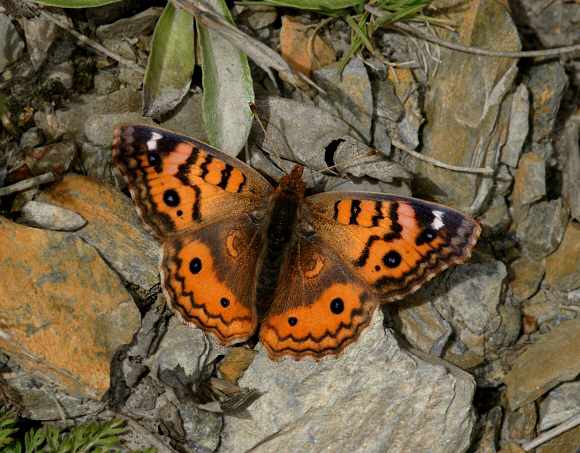
Introduction
The tribe Junoniini includes some of the most colourful and instantly recognisable butterflies in the world, including the African genera Precis Pansies and Salamis Mother of Pearl butterflies, and the Asian Kallima Dead Leaf butterflies. In the neotropics the tribe is represented by the genera Anartia, Junonia, Hypolimnas, Metamorpha, Napeocles and Siproeta. The genus Junonia is very closely allied to Precis, in fact the two are regarded as synonymous by some taxonomists.
There are Junonia species in the neotropics – coenia, evarete, genoveva and vestina. The latter can at first glance be mistaken for a Chilean Painted Lady Vanessa carye. The shape of the forewings in vestina however is less angular, and the dark markings far more linear.
Junonia vestina occurs only in southern Peru and Bolivia.

Habitats
This species is locally common in the puna grassland / upper cloudforest transitional zone of the eastern Andes, at elevations between about 2400-3000m.
Lifecycle
The lifecycle is apparently unknown. The larvae of other Junonia species feed on a wide range of plants in the families Plantaginaceae, Onagraceae, Scrophulariaceae, Verbenaceae, Crassulaceae and Rhizophoraceae.
Adult behaviour
Males are usually seen in two’s and three’s imbibing moisture from bare ground in rocky terrain where small rivulets ford mountain roads. Both sexes nectar at Senecio ( ragworts ), which are abundant in the vicinities where the butterfly occurs.
